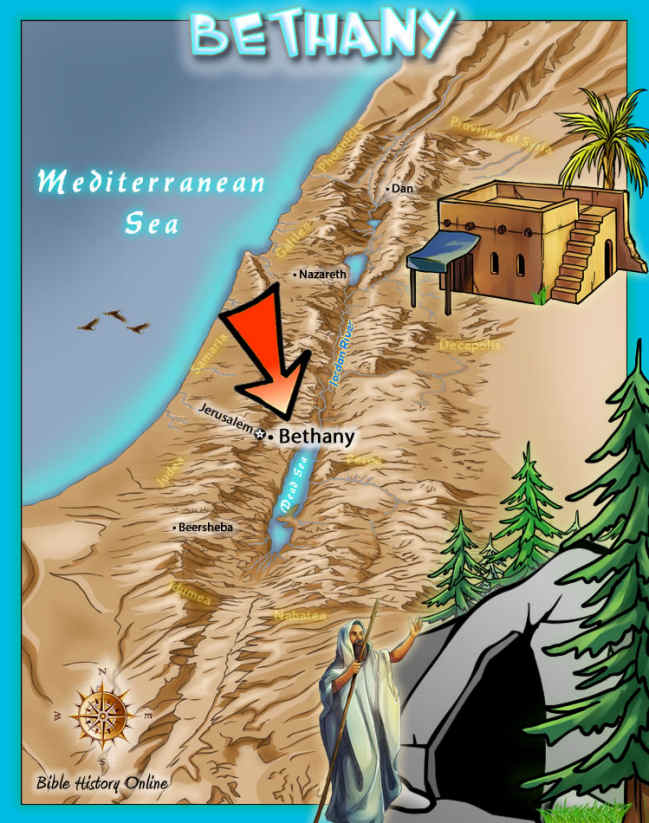+ Blue Letter Bible/KJV + 개역한글 성경구절
글 수 6
2024.6.17 02:06:49

▶ 예물/속죄제
Offerings, The. 5.
THE SIN OFFERING. This and the trespass offering stand apart from all the other offerings. In the burnt offering and the peace offering the offerer came as a worshipper, and by the imposition of hands became identified with the acceptability and acceptance of the victim: whereas in the sin offering the victim was identified with the sin of the offerer.
The sin offering was to make an atonement for sin — to avert judgement from the offerer. This general characteristic is always the same, though the details differ, as will be seen in the following table:-
Comparison Table of Offerings
The Day of Atonement stands alone — the blood of the sin offering being taken then into the holy of holies, and sprinkled on and before the mercy seat. Atonement had to be made according to the requirement of the nature and majesty of God's throne. This type was repeated yearly to maintain the relationship of the people with God, because the tabernacle of Jehovah remained among them in the midst of their uncleanness. Atonement was also made for the holy place and the altar: all were reconciled by the blood of the sin offering, and on the ground of the same blood the sins of the people were administratively borne away into a land not inhabited. Lev. 16.
(레16: 속죄일에 대한 규례
In the case of sin on the part of the priest or the whole congregation, all approach was interrupted: so the blood had to be carried into the holy place, sprinkled there seven times, and placed on the horns of the altar of incense — the place of the priest's approach — for the re-establishment of approach. See ATONEMENT, DAY OF. In the case of a ruler or of one of the people the blood was sprinkled on the brazen altar, the place where the people approached: this also was to restore approach for the individual.
The sin offering is not, as a whole, said to be a sweet savour: sin is the prominent idea, yet the fat was burnt upon the altar for a sweet savour. Lev. 4:31. Christ was at all times (on the cross as elsewhere) a delight to God. The sin offering that was eaten by the priest is declared to be 'most holy.' Lev. 6:29. This is typical of Christ, priest as well as victim, having our cause at heart.
(레04:31 그 모든 기름을 화목제 희생의 기름을 취한 것같이 취하여 단 위에 불살라 여호와께 향기롭게 할지니 제사장이 그를 위하여 속죄한즉 그가 사함을 얻으리라
(레06:29 그 고기는 지극히 거룩하니 제사장의 남자마다 먹을 것이니라
In the cases provided for in Lev. 5:1-13, where it was chiefly for acts which were sins by reason of infraction of some enactment or ordinance, the ability of the offerer was considered. If a person was unable to bring a goat for a sin offering, he was allowed to bring two doves; and if he were unable to bring even these, then he might bring the tenth part of an ephah of fine flour. This does not seem to agree with the necessity of blood-shedding for remission, but the memorial burnt upon the altar typified the judgement of God in dealing with sin. It brought the offering within the reach of all, so that the very poorest soul could have a way of meeting God as to its sin. Poverty represents little light or ignorance, not rejection of or indifference to Christ. And as the flour reached the fire of judgement on the altar, the death of Christ for sin was not left out in this most simple form of sin offering.
(레05:1-13 속죄제를 드리는 규례
--- Morrish Bible Dictionary
개역한글KHRV( 120일1독, 1년1독, 권별, 성경통독 )
STUDY - 구절(WESLEY), 단락(MATTHEW), 읽기(Wayne),
Dictionary - Chapter, OT구약, NT신약, 테마별,
(*.127.135.148)
|
.
성경연대표
1.창조
2.족장
3.출애굽
4.광야
5.정복
6.사사
7.통일왕국
8.분열왕국
9.포로
10.포로귀환
11.중간
12.예수
13.초대교회
14.세계선교
관련그림.지도 1.창조
2.족장
3.출애굽
4.광야
5.정복
6.사사
7.통일왕국
8.분열왕국
9.포로
10.포로귀환
11.중간
12.예수
13.초대교회 Ani
1창세기[Genesis] 2출애굽기[Exodus] 3레위기[Leviticus] 4민수기[Numbers] 5신명기[Deuteronomy] 6여호수아[Joshua] 7사사기[Judges] 8룻기[Ruth] 9사무엘상[I Samuel] 10사무엘하[II Samuel] 11열왕기상[I Kings] 12열왕기하[II Kings] 13역대상[I Chronicles] 14역대하[II Chronicles] 15에스라[Ezra] 16느헤미아[Nehemiah] 17에스더[Esther] 18욥기[Job] 19시편[Psalms] 20잠언[Proverbs] 21전도서[Ecclesiastes] 22아가[Song of Solomon] 23이사야[Isaiah] 24예레미야[Jeremiah] 5예레미아애가[Lamentations] 26에스겔[Ezekiel] 27다니엘[Daniel] 28호세아[Hosea] 29요엘[Joel] 30아모스[Amos] 31오바댜[Obadiah] 32요나[Jonah] 33미가[Micah] 34나훔[Nahum] 35하박국[Habakkuk] 36스바냐[Zephaniah] 37학개[Haggai] 38스가랴[Zechariah] 39말라기[Malachi] 40마태복음[Matthew] 41마가복음[Mark] 42누가복음[Luke] 43요한복음[John] 44사도행전[Acts] 45로마서[Romans] 46고린도전서[I Corinthians] 47고린도후서[II Corinthians] 48갈라디아서[Galatians] 49에베소서[Ephesians] 50빌립보서[Philippians] 51골로새서[Colossians] 52데살로니가전서[I Thessalonian] 53데살로니가후서[2 Thessalonian] 54디모데전서[I Timothy] 55디모데후서[II Timothy] 56디도서[Titus] 57빌레몬서[Philemon] 58히브리서[Hebrews] 59야고보서[James] 60베드로전서[I Peter] 61베드로후서[II Peter] 62요한일서[I John] 63요한이서[II John] 64요한삼서[III John] 65유다서[Jude] 66요한계시록[Revelation]

 , 성경권별
, 성경권별 

